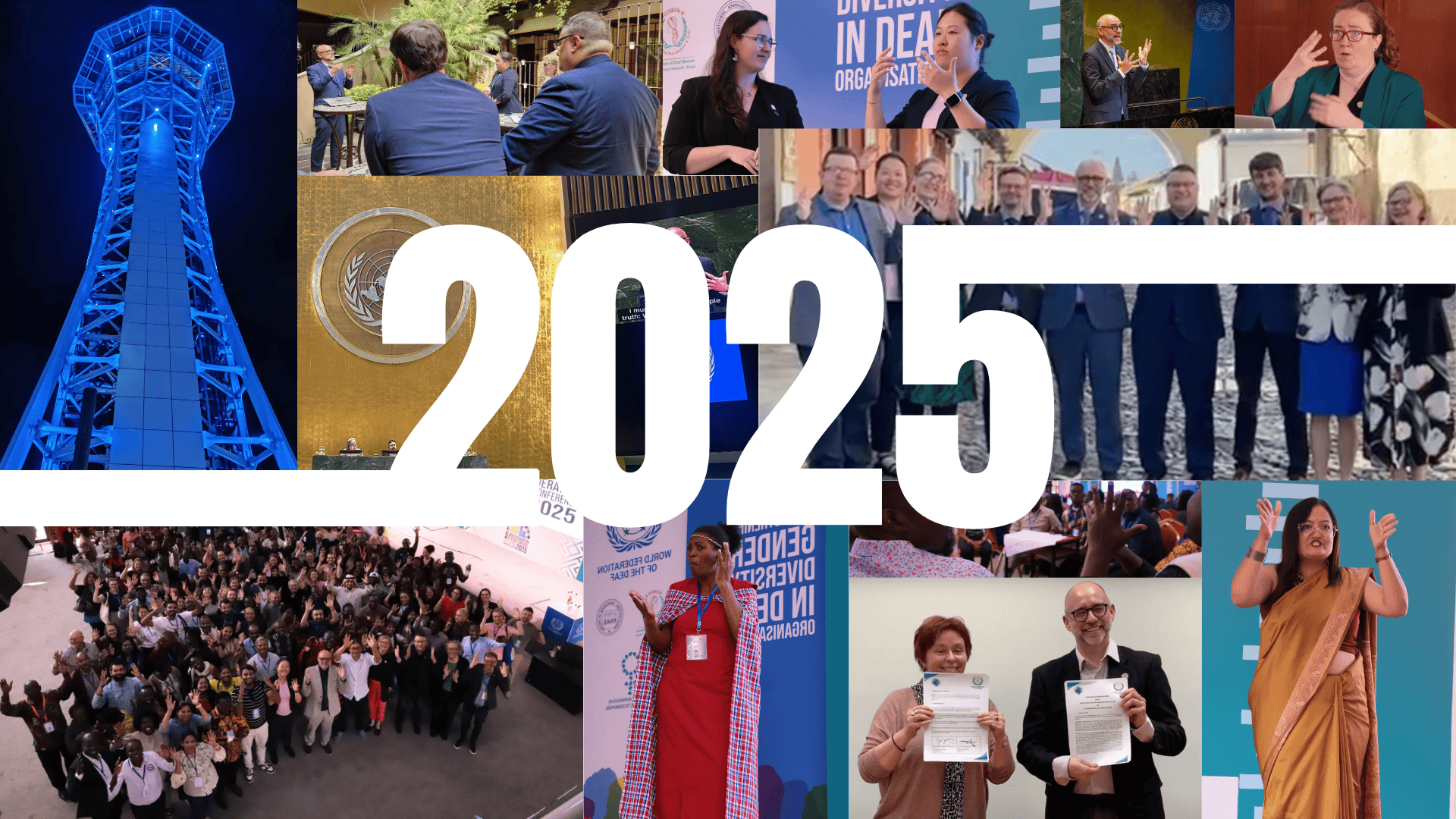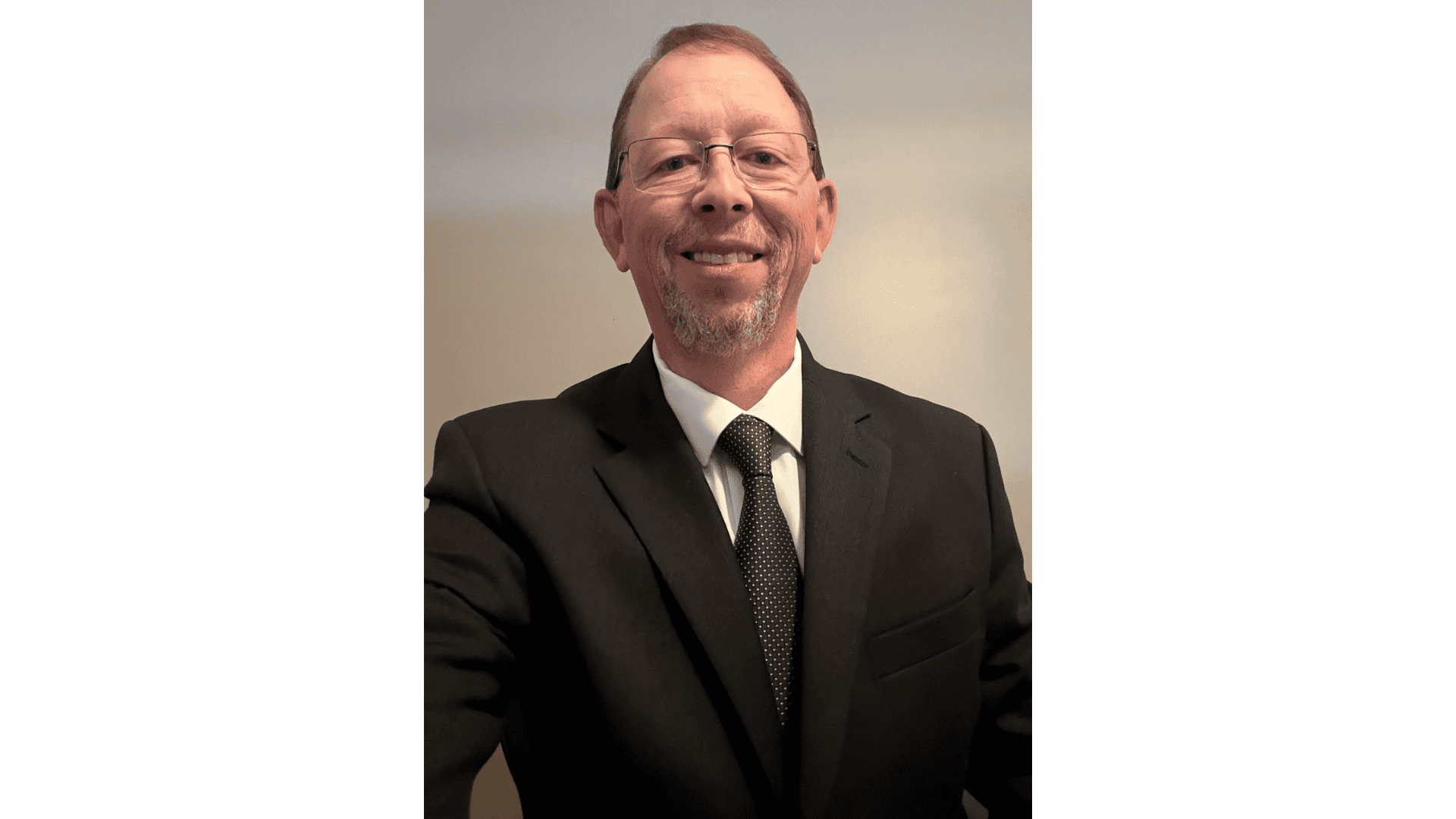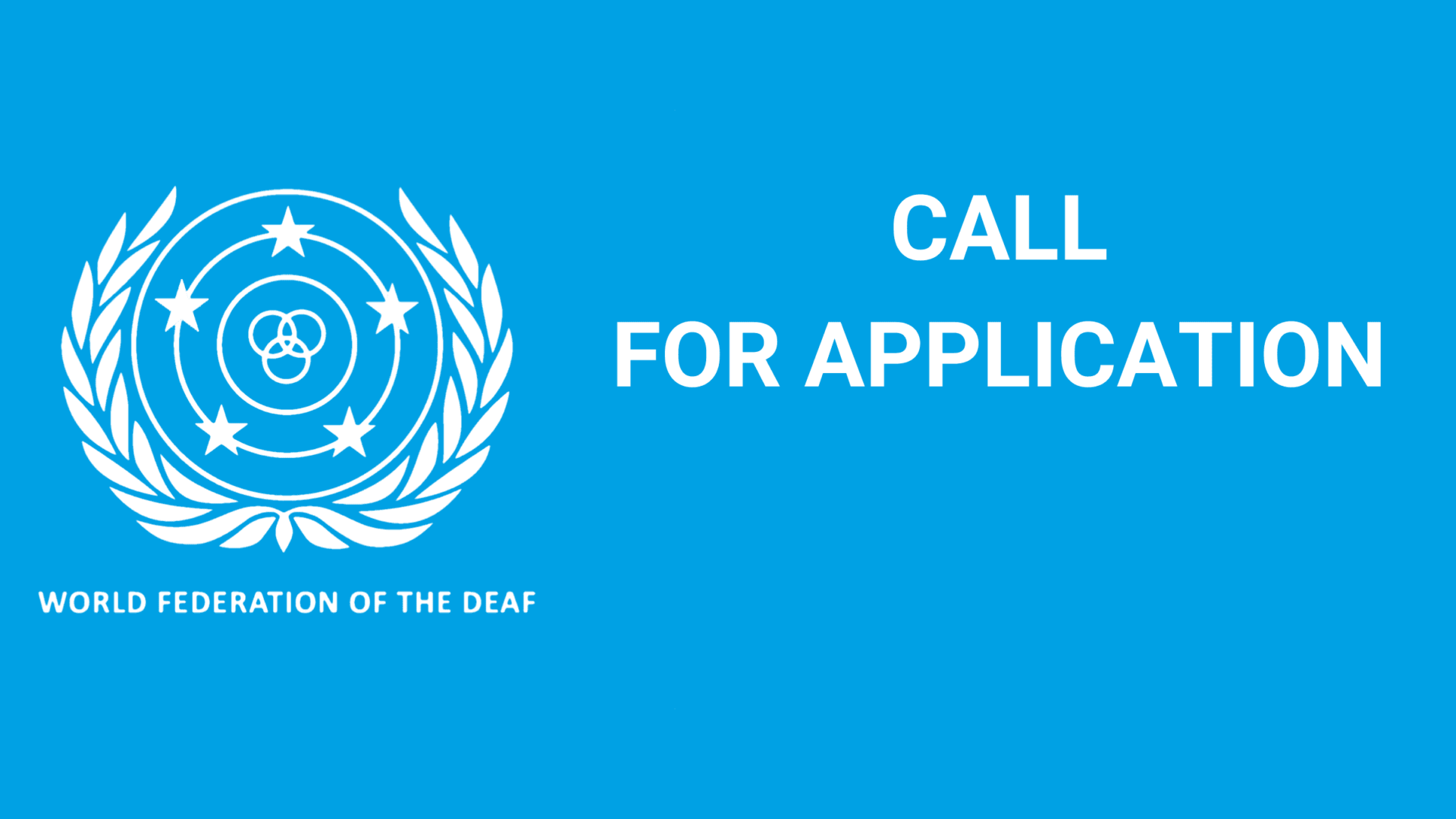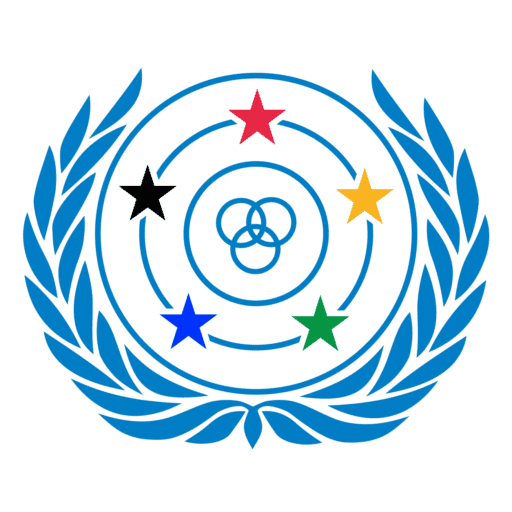For immediate release
Thursday, 10 November 2011
Bilingual education is the only way for deaf children to gain equal opportunities and allowing them to become full citizens in their own right. This was the final conclusion from the sign language conference in Ål, Norway, organised jointly by the World Federation of the Deaf (WFD), the European Union of the Deaf (EUD), and Ål Experiential College.
Becoming bilingual in the national sign language and the written language of one’s country of residence is a fundamental right for deaf children. National sign languages are the mother tongues of deaf people and the only language they can acquire fully and effortlessly. To function in society it is essential for deaf children to become proficient in the respective (written) language of the country. Therefore, meaningful bilingualism must be ensured in education as early as possible and throughout the course of the whole educational path, including Lifelong Learning programmes.
WFD and EUD strongly urge stakeholders in education to take under consideration the unique needs of deaf children by supporting their sign language acquisition as well as the learning of the national (written) language. WFD and EUD call upon national and regional governments to take under consideration the Brussels Declaration of 19 November 2010, which postulates the rights of Deaf and Hard of Hearing sign language users to learn a sign language and learn and study bilingually. Considering that the Declaration was included in the European Parliament report on the Mobility of Persons with Disabilities, which was adopted by the European Parliament on 25 October 2011, WFD and EUD request policymakers to take positive action to ensure deaf children can become fully bilingual and therefore full and equal citizens.
The international conference in Ål, which brought together stakeholders from the Deaf Community, academia, and the educational sector, underlines these demands. Dr Hauser from the Rochester Institute of Technology (USA) presented research showing that there is no evidence learning a sign language interfered with the learning of a second language.
WFD and EUD are concerned that the recognition of sign languages does not have the desired effect in practice. The Finnish government has recognised sign language at constitutional level but as the Director of the Development Department of the Finnish Association of the Deaf pointed out, “the legal obligation does not necessarily guarantee the realisation of linguistic rights in practice”.
WFD and EUD therefore call upon policymakers and national as well as regional stakeholders to not only legally recognise the national sign languages of the world but also ensure that in practice deaf children are educated in a bilingual environment, facilitating the acquisition of the national sign language and Deaf culture.
Facts about WFD and EUD:
World Federation of the Deaf (WFD): Established in Rome, Italy, in 1951, is an international, non-governmental central organisation of national associations of Deaf people, with a current membership of associations in 133 countries worldwide. WFD has consultative status in the United Nations (UN) system, including the Economic and Social Council (ECOSOC); the UN Educational, Scientific and Cultural Organization (UNESCO); the International Labour Organization (ILO); and the World Health Organization (WHO). WFD has participatory status with the Council of Europe (CoE).
European Union of the Deaf: Based in Brussels, Belgium it is a not-for-profit European non-governmental organisation (ENGO) comprising National Associations of the Deaf (NADs). It is the only supranational organisation representing Deaf people at European level in all 27 EU Member States, including Iceland, Norway and Switzerland. EUD has participatory status with the Council of Europe (CoE).
Facts about sign language and Deaf:
Sign language refers to the native visual and cultural languages of Deaf people, which are fully-fledged languages with their own grammar. Despite the widespread myth, there is not one single universal sign language in the world. Sign languages vary greatly between countries and ethnic groups. Sign Languages are the only languages that are fully accessible to Deaf people due to their visual nature.There are about 70 million Deaf people in the world. Deaf people form Deaf Communities which have their own cultures.




